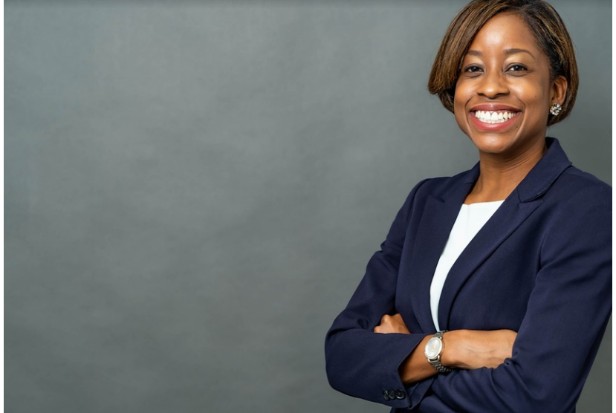It takes a significant amount of effort for most large businesses, institutions, and nonprofit organizations to convey their vision, offerings, objectives, and achievements to internal and external audiences. In order to manage it, they work with specialists in communication who are qualified to develop and deliver the proper message to the appropriate audience via the most efficient messaging platforms. If the business is large enough, a chief communications officer (CCO) will be in charge of that team.
In her Forbes article “Today’s Chief Communications Officer Is More Than A Storyteller,” Chief communications officers must master three focus areas, according to Lynn Kier, VP of Corporate Communications at Diebold Nixdorf.
Kier emphasizes that “internal relationships are just as important as external communications.” To guarantee that everyone is on the same page when dealing with those outside the organization, CCOs must work closely with all important internal partners. Internal communication needs to be consistent across all departments because “this ongoing internal dialogue shapes the story a brand tells to external stakeholders.”
While the role of the COO continues to be that of the chief storyteller, target audiences nowadays respond to brand narratives that are “authentic and mindful.” That’s why effective COOs must also be able to illustrate how there is no “daylight between a company’s brand promise and its reality.”
Finally, in our highly connected, “always on” age, Kier notes that successful COOs must leverage “the power of integrated communications.” A fragmented media landscape means that reaching target audiences involves communications strategies that work across “digital, broadcast, print, and social media assets.” The COO of today keeps an eye on more channels than ever, each with its own rewards and risks.
So, what is a chief communications officer, and how does this leader acquire the expertise to succeed? We have some solutions if you’re considering going into or moving up in the communications industry.
Table of Contents
What is a Chief Communications Officer?
Chief communications officers are executives who are responsible for leading an organization’s communication initiatives. The majority of CCOs are part of the thought leadership of a company or organization, along with the chief marketing officer (CMO) and chief financial officer (CFO), and they report directly to the chief executive officer (CEO). They could serve as the company’s spokesperson and organize executive-level messaging for the C-suite team, investors, and other stakeholders.
To develop and disseminate internal and external messaging, communications managers and a communications team typically work for CCOs. The internal audience consists of staff members who must be aware of information regarding human resources, new hires, and the organization’s strategic objectives and accomplishments.
Investors, media, industry peers, and the general public are examples of external audiences. These communications include investor relations, product announcements, corporate sustainability messages, and recruitment efforts. Public relations, public affairs/community relations, and marketing efforts also play a significant role. Press releases, social media, videos, blogs, and other forms of external communication are among them.
What Do They Do?
To ensure that all internal and external messages are consistent in tone and align with the organization’s brand, chief communications officers supervise the creation and execution of strategic communication plans. They act as the company’s chief storyteller and communication gatekeeper, with approval rights over all messaging that represents the business. The COO is in charge of managing a company’s reputation and, if necessary, entering crisis management mode. While managing teams of marketing and communication experts who produce and distribute content across a variety of channels, it is a demanding job that necessitates close collaboration with many constituencies within an organization.
Where Do They Work?
Jobs for chief communications officers are available in a lot of mid and large-sized businesses in almost every sector. The corporate communications officer or public relations officer are two additional positions that may be comparable to the CCO depending on the company. Others may include the words “marketing” or “brand” in their job title.
How Much Do Chief Communications Officers Earn?
The average salary for a chief communication officer is $230,500, according to Salary.com. Depending on the applicant’s level of education and experience, the organization’s location, and both, salary ranges can differ significantly. The average annual income rises to $276,900 thanks to bonuses and other incentives. In terms of salary and other compensation, those in the top 10 percent make more than $445,000.
How to Become a Chief Communications Officer
One of the first things to think about if you want to work as a chief communications officer is how much education you’ll need. According to our research, 73.5% of chief communications officers hold a bachelor’s degree. In terms of higher education, we discovered that master’s degrees are held by 15.8% of chief communications officers. Despite the fact that most chief communications officers hold a college degree, you cannot hold this position with just a high school diploma or GED.
How To Become A Chief Communications Officer In 7 Steps:
- Step 1: Explore the chief communications officer’s education
- Step 2: Develop chief communications officer skills
- Step 3: Complete relevant training/internship
- Step 4: Research chief communications officer duties
- Step 5: Prepare your resume
- Step 6: Get chief communications officer experience
- Step 7: Apply for a chief communications officer job
New Responsibilities for CCOs
In the past, communications leaders have been in charge of managing executive communications, media and investor relations, issues and crises, community relations and philanthropy, events management, and, of course, corporate communications. Internal communications are managed by some communications executives.

Today, that list has grown, and can also include:
- Message creation and alignment
- Reputation management
- Corporate social responsibility/ESG
- Leadership on purpose, vision, values, and culture
- Social media and content marketing
- Thought leadership
- Strategic consulting and planning
- Data analysis and operationalization
- Customer satisfaction and Lifetime Customer Value (LCV)
Let’s take a closer look at a few of these critical new responsibilities:
management of one’s reputation. There’s a reason why the CCO is often thought of as the Chief Reputation Officer: “The Chief Communications Officer is the person managing our reputation, including PR, external affairs, and social media,” says at Centene Corporation, C. David Minifie, Executive Vice President of Corporate Strategy and Chief Experience Officer. Effective and thoughtful communications about a business’s good deeds support a good reputation and promote financial performance. In fact, according to our data, a one-point increase in reputation score results in a 2.6 percent increase in market cap. That can amount to $1 billion per reputation point for a typical corporation. A strong organizational reputation also sets your company apart from the competition, aids in attracting and keeping talent, and facilitates crisis management and post-crisis recovery. Therefore, the CCO is frequently the one driving reputation measurement, utilizing the data, and championing action that will affect key reputation drivers.
Alignment and integration. In order to communicate the mission, vision, and values of their organization to internal and external audiences with varying needs, motivations, and perspectives, CCOs develop, manage, and deliver messages that support those objectives. Collaboration with internal clients and the capability of speaking to various stakeholders are required in order to align and integrate messaging across the organization. A core objective that involves many areas of the business, including less obvious ones like facilities management and logistics, is finding the right balance among various communication channels and audience segments. Leaders who rose through the ranks of PR or communications now make use of their connections and experience from the C-Suite.
LCV and client satisfaction The emphasis of the communications function has shifted from the image, or what people think of your brand, to reputation, or what people actually think about your brand. A key strategy for gaining a competitive edge, retaining clients, promoting word-of-mouth advertising and referrals, and generating other operational advantages that increase revenue is to tell the story of how an organization fulfills its purpose and promises.
Decision-making is supported by data. Data in the PR and communications industry has typically been retrospectives, such as media mentions, reporters’ requests, or PSAs distributed. This is altering, for instance, as real-time or nearly real-time sentiment measurement is now possible thanks to social media monitoring tools and reputation management platforms like RepTrak. As the use of analytics grows throughout the enterprise, communications leaders are expected to determine what’s worth measuring, how to measure it, and how to operationalize insights. Instead of simply adopting KPIs like AVE from other functional areas, the CCO dashboard calls for leaders to create pertinent measures of the impact of corporate responsibility activities, employee satisfaction studies, media mentions, and other activities. Rapid response (useful in times of crisis) and proactive planning is made possible by timely and actionable data.
A New Skill: Empathy
Empathy was popular in marketing and communication circles even before the COVID-19 pandemic, and astute CCOs are making the necessary adjustments. As Paul Polman, former CEO of Unilever has said, “Brands that use compassion, emotion, and facts to communicate are rewarded.”
Corporate communicators need to be empathetic in order to develop strategies and content that are effective. They must comprehend the mindset, values, needs, and desires of every stakeholder. People are more likely to trust, forgive, and support a brand when they sense empathy from it.
Infusing humanity into pertinent messaging, setting the right tone, and engaging stakeholders in a genuine, meaningful way are all traits of astute leaders. (See the B2B and B2C Elements of Value from Bain & Company for examples.)
An Essential Role
The COVID-19 pandemic has demonstrated that effective communication is a crucial task that affects many facets of commercial and reputational success. The CCO’s role will probably continue to change as we start to think about business in a post-pandemic world. The time has come to occupy a more assertive and strategic position within the C-Suite.
What is a Master’s in Strategic Communications?
A graduate-level degree program focused on the theories and models of persuasive communication is known as a master’s in strategic communications. It teaches the analytical procedures and tactical procedures used by businesses to create audience-based communication projects. The role of strategic communications in various industries is explained to students, along with how it relates to a digitized world. Theory of communication, storytelling and digital media, quantitative research, campaign planning and evaluation, and public relations are just a few of the key competencies that are taught.
Admission Requirements/prerequisites
The majority of strategic communications degree programs demand a bachelor’s degree, undergraduate transcripts, a 3.0 GPA, GRE or GMAT scores, a personal statement, letters of recommendation, and a resume/CV.
Curriculum
Programs in strategic communications impart the fundamentals and real-world applications of various communication endeavors. They look at the methodology used to create organizational communication campaigns and how they are implemented across various departments and channels.
Research techniques, legal concerns, and how to incorporate visual communications into a communication plan are the main topics of specific strategic communications coursework. At Butler University, for example, strategic communications core courses include:
- Foundations of Strategic Communication
- Research Methods: Design & Analysis
- Law and Ethics in Strategic Communication
- Strategic Visual Communication
Specialization
Most graduate programs in strategic communications offer specialization options, and students frequently have to complete a capstone project that applies strategic communications principles to actual situations. Depending on their field of specialization, these electives explore particular multimedia platforms and regular organizational communication techniques that graduates will use professionally. At Butler, for instance, a student can specialize in the following areas:
- Social Media Management
- Crisis Communication Plans
- Media Relations
- Brand Strategy
- Global Strategic Communication
- Strategic Storytelling for Advocacy
- Health & Risk Communication
Does a Chief Communications Officer Need a Strategic Communications Master’s to Succeed?
A master’s degree in strategic communications is intended for professionals who want to improve their abilities and understanding of positions in organizations that focus on communications. Anyone pursuing a career as a chief communications officer has a great advanced degree option with this program.
Since there are so many subsets within the discipline, such as social media, digital marketing, content creation, and advertising, it is advantageous for prospective COOs to have a master’s degree given the sheer diversity of communication strategies and channels. In this regard, advancing to higher-level communications positions like the CCO may necessitate the knowledge gained through a master’s program.
Advanced concepts learned in a strategic communications master’s program include:
- leading communication strategy across multiple media platforms with a focus on a variety of audiences by putting theories and best practices to use.
- designing and evaluating research techniques to support strategic communication and meet organizational objectives.
- using simulations and case studies from the real world to educate students on the ethics and effectiveness of strategic communication.
The corporate strategy and communication skills you’ll learn while earning this degree are likely to make you a competitive candidate for this role when the opportunity arises, even though it is possible to hold the position of CCO without a master’s in strategic communication.
Top Strategic Communications Master’s Programs
American University
The Washington, DC campus of American University offers you the chance to get ready for your future career by learning how to deal with some of the most important social, political, and ethical communications dilemmas. In addition to having the chance to work with a highly qualified faculty, students are paired with alumni mentors to help them transition from school to beginning their professional careers.
Butler University
Butler University offers a thirty-credit, ten-course Master of Science in Strategic Communication program entirely online. Its graduates are prepared with the research methods and efficient communication strategies required to improve their communication planning and carry out their campaigns through various digital media formats.
Columbia University
A Master of Science in Strategic Communications is available from Columbia in a variety of full-time and part-time options. The program features small class sizes, a highly adaptable curriculum, and faculty from a range of relevant industries. A graduate-level practicum and internship experience are completed by full-time students.
George Washington University
30 credits of coursework and one of three capstone project choices make up the Master of Arts in Strategic Communications program at GWU. The school is well-ranked by US News and World Report. Graduates of the program go on to work for the State Department, CNN, and Politico.
New York University
Public Relations Management and Corporate and Organizational Communication are the two concentration options for the 42-credit Master of Science in Public Relations and Corporate Communication at NYU. On the former route, students learn how to manage campaigns for the best outcomes. The latter “focuses on clear and effective communication through all channels of corporate life.”.
Syracuse University
One of the top communication schools in the nation is the Newhouse School in Syracuse. Public relations, advertising, journalism innovation, and media management are the four specialization options available for the online Master of Science in Communications program. Social Media for Public Communicators, Multimedia Storytelling, and Media Law are examples of core course titles. You can finish this program in 15 months, and admission does not depend on standardized test results.




